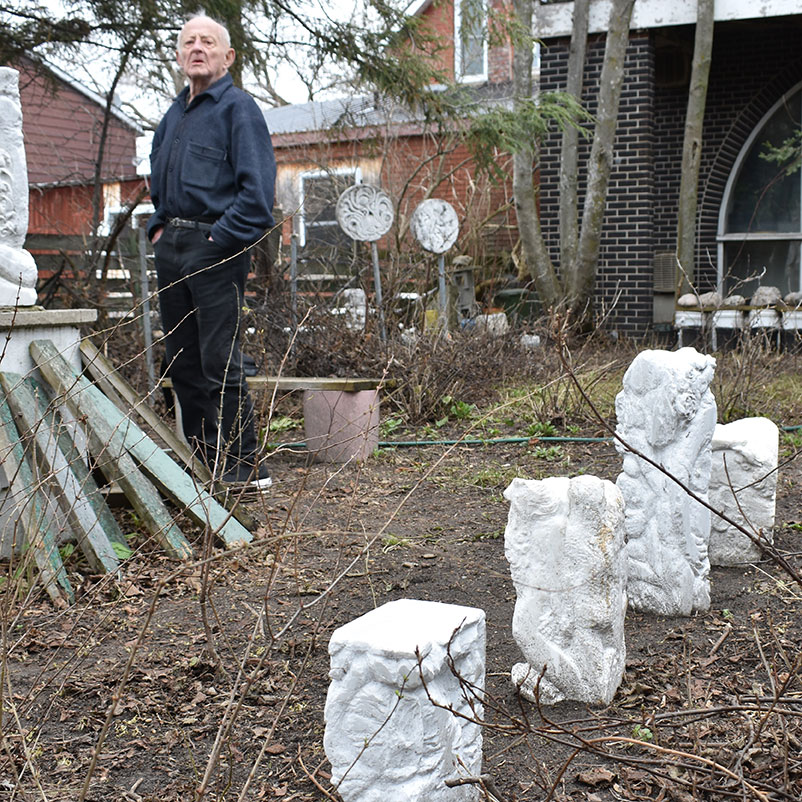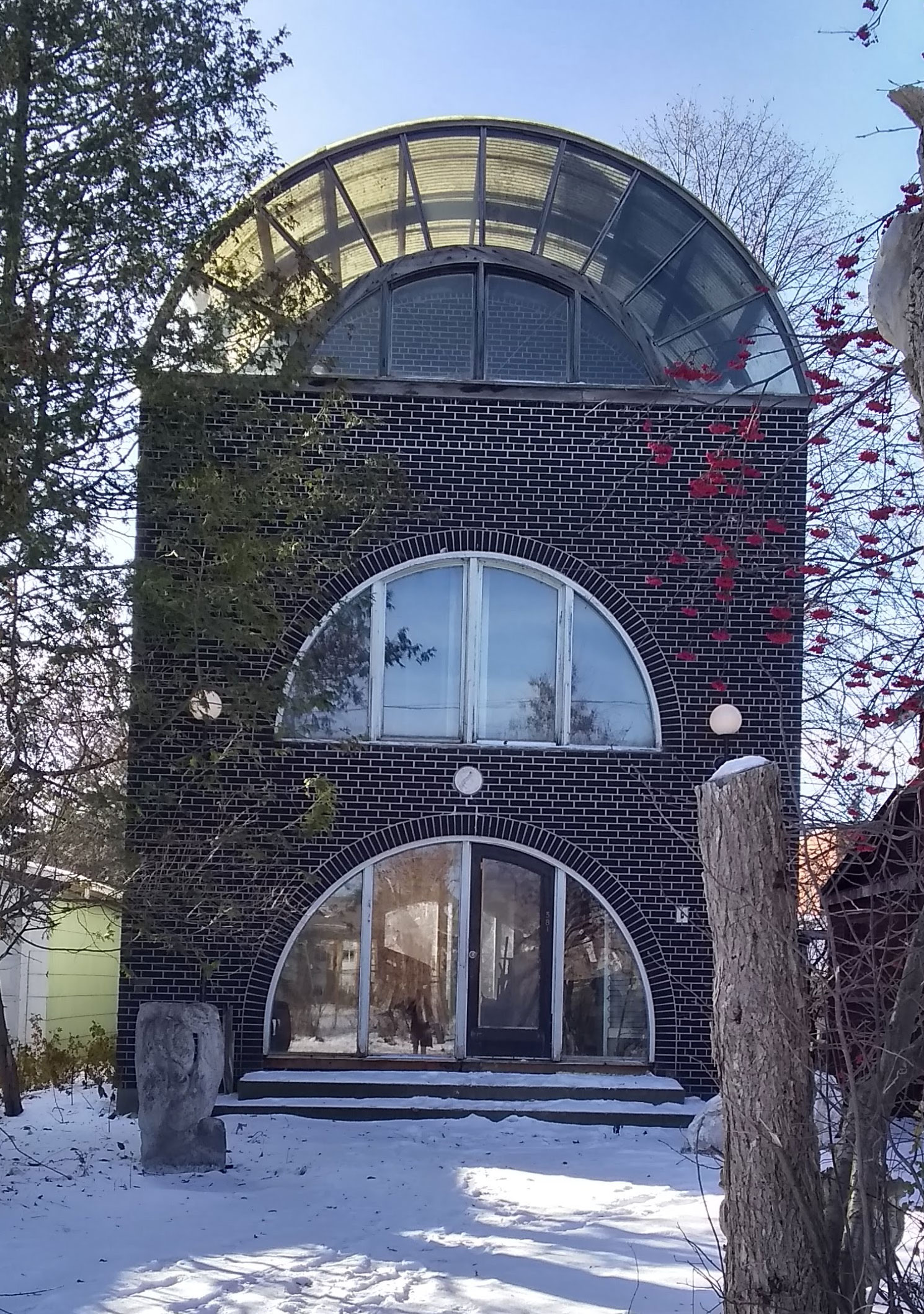Manfred May, 1928 – 2019
The Compact Green City website project started from my personal interest in Manfred May’s sculptural work. I discovered his unique home while out walking one day, and was invited by the man himself to explore his sculpture garden–a permanent outdoor installation of his concrete works on his property. Intrigued, I returned a few times to photograph his work (while he was still allowing this; later he started to be concerned about thieves) and to talk to him.
Learning that I was also an artist, he invited me in to look at his sketches and to take part in a clay-sculpting class a friend was organizing in his basement. I found his home fascinating, even more so when I learned that he was the architect who had designed it.
After Manfred’s death in 2019, I attempted to find out where his sculptures were taken after his house was sold. In the process of looking for next-of-kin to contact (without success) I realized there was very little information about Manfred online. I added a memorial page to my own art portfolio site, believing there would be other people who’d like to see his work again and remember him.

Photo courtesy of Jurgen Mohr, 2019

As a result, an architect from Ottawa reached out to see if I had any information about Manfred’s buildings, which re-ignited my interest in learning more about his work. I visited the North Bay Library and checked out his book To Build The Compact Green City: A Manifesto and Call To Re-Think Architecture and City Planning, which drew me in immediately.
Although it was written decades ago, it stands as a forward-thinking approach to designing cities to inspire joy, to be sustainable, to allow people to grow their own food, and to use space well so large populations can co-exist comfortably in community. I think it’s increasingly important to promote Manfred’s ways of thinking about standards of human living.
Stephanie van Doleweerd, February 15th 2025, North Bay Ontario
